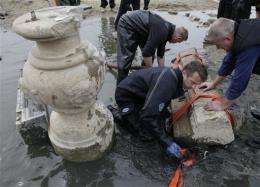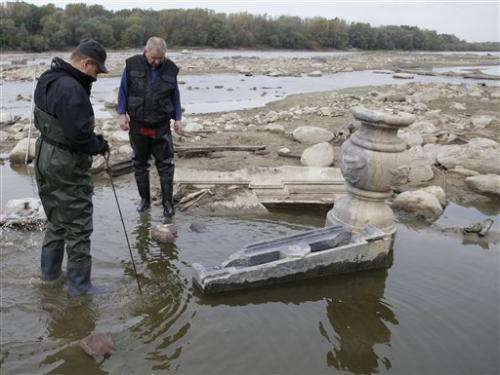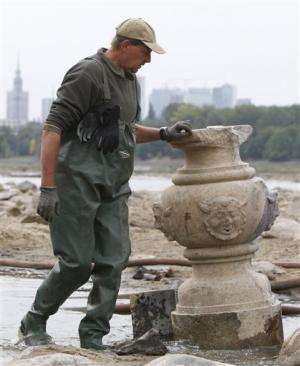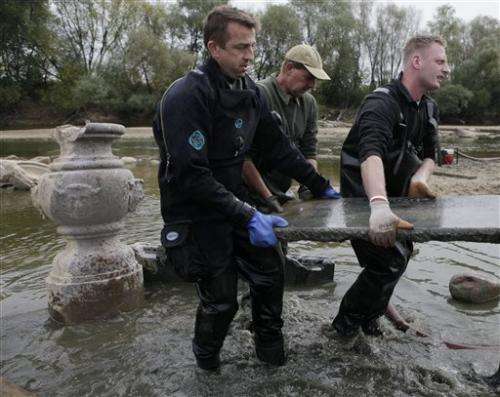17th-century treasures being recovered in Poland

(AP)—Capitalizing on low water levels in Warsaw's Vistula River, police are teaming up with archaeologists to recover gigantic marble and alabaster treasures that apparently were stolen from royals in Poland by Swedish invaders in the mid-17th century.
A police Mi-8 helicopter hovered over a riverbed on Thursday, lifting ornaments such as the centerpiece of a fountain with water outlets decorated with Satyr-like faces.
For police, it was gratifying to provide the chopper and assist Warsaw University archeologists in "this very important mission of retrieving priceless national treasures," said Mariusz Mrozek, a spokesman for Warsaw police.
Archaeologists have long known that such well-preserved treasures were located in the riverbed in the Warsaw area, but not exactly where.

The archeologists and frogmen, led by Hubert Kowalski, have previously retrieved some of the stolen stone ornaments from the Vistula riverbed in three years of searching for the sunken treasures. But only now, with the river much lower than normal, thanks to recent heat waves and droughts, their findings have become spectacular.
"This is a precious find. These elements were stolen from Warsaw's royal residences and palaces," said Marek Wrede, a historian at the Royal Castle.
The valuable artistic objects—marble floor tiles, parts of archways and columns—were robbed from Warsaw by the Swedes who overran the nation in mid-17th century and took heavy loads of spoils from across the country. Today's items probably came from the Royal Castle and from a royal country residence, the Kazimierz Palace.

The artifacts probably were being carried by a barge that sank, one of the many such vessels that ferried loot down the river to the Baltic Sea and to Sweden.
The find is precious for Poland, which has been repeatedly plundered by neighboring armies over the centuries, including Nazi Germany and the Soviet Red Army during World War II.

Kowalski said he knew about the hidden artifacts from 17th-century letters that mentioned barges that had sunk in the area.
First word of where the treasures might be came in 1906 when sand barge operators discovered some items, but could retrieve only a few of them.
Kowalski said his team is now busy cleaning the newly retrieved items, which are "very well preserved, given the 350 years in water."
It has not been decided yet where and when they will be publicly displayed.
Copyright 2012 The Associated Press. All rights reserved. This material may not be published, broadcast, rewritten or redistributed.


















